
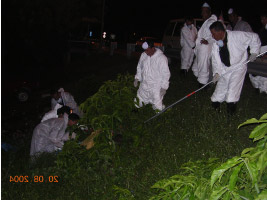
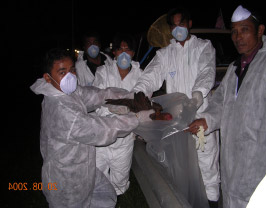
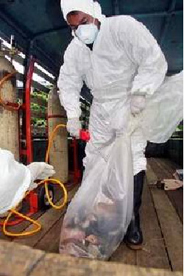

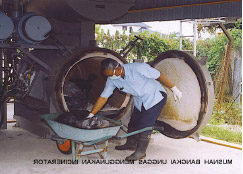
Compensation Rate
|
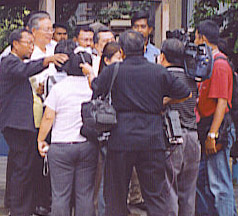 |
|||||||||||||||||||||||||
Information Dissemination 1. International/regional |
||||||||||||||||||||||||||
Movement Control Measures 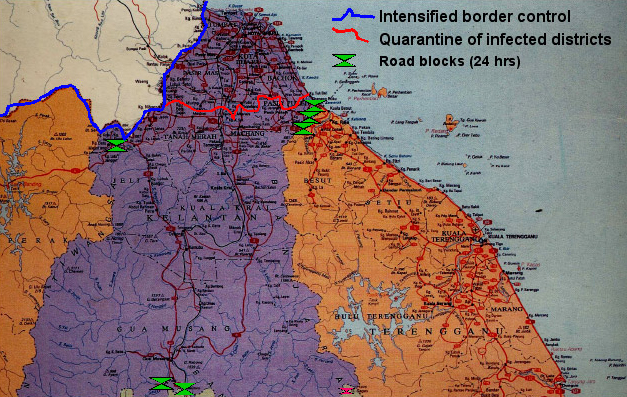 |
||||||||||||||||||||||||||
Summary of HPAI outbreaks in Malaysia (2004)
|
||||||||||||||||||||||||||
Currently HPAI infection in Malaysia is in Stage IV to V of disease response mechanism.  |
||||||||||||||||||||||||||
Lesson Learnt 1. A committed government with clear policy and sufficient resources are necessary to control and eradicate the disease. 2. The Highly Pathogenic Avian Influenza Infection is trans-border in nature. In addition to strengthening border control, bilateral and international cooperation are necessary. 3. Clinical manifestations of the disease varies significantly from flock to flock. Details epidemiological of the disease in village chicken, duck and bird populations need to be fully understood. 4. Establishment of emergency response mechanism is a crucial components of disease control and eradication. An effective 5. An effective surveillance system to detect presence of virus is vital. This is especially true when the disease manifestations are mild and varies. 6. Spreading of the disease can be prevented. It requires an effective movement control and awareness of the disease. 7. A strong laboratory support is important component of the disease eradication. Early diagnosis and confirmation enable quick elimination of infected host and reduce risk of further spreading. 8. The disease attracts national and international interest. Mass media played major role in dissemination of facts on the disease status and measures taken by the government to the general public to avoid unnecessary public scares. 9. Multi agencies collaboration is vital for resource sharing in control and eradication of the disease. 10. Direct communication with medical authority enable the zoonotic aspect of the disease is address timely. 11. Farmers and Livestock Association understanding on the disease and actions taken by the government to control and eradicate the disease minimize poultry production and market disruption (and improve farms bio-security). 12. Availability of compensation scheme is important. Reasonable rate will ensure cooperation by the farmers in culling operation. 13. At operation level Malaysiafs experiences showed: |
||||||||||||||||||||||||||
  |
||||||||||||||||||||||||||
To the previous page |
||||||||||||||||||||||||||